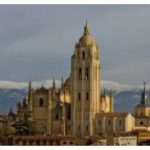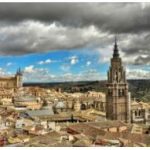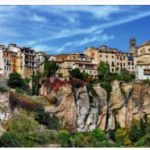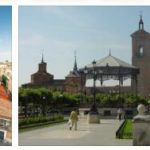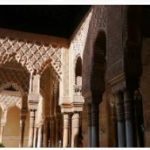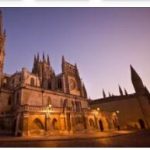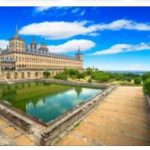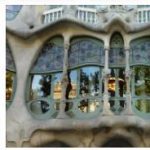The city in northern Extremadura is a gem of medieval architecture. It shows numerous monuments from very different epochs. Romanesque, Moorish, Gothic and Renaissance style features are harmoniously combined here, with the 30 Moorish towers protruding.
Old town of Cáceres: facts
| Official title: | Old town of Cáceres |
| Cultural monument: | Old town with the city wall resting on Roman foundations from the 15th or 18th century as well as the city gate Arco del Cristo and the main gate Arco de la Estrella, the 13th century Basílica Santa María la Mayor, as well as some palaces 15th century like Casa de los Golfines de Abajo and Casa de las Cigüeñas |
| Continent: | Europe |
| Country: | Spain, Extremadura |
| Location: | Cáceres |
| Appointment: | 1986 |
| Meaning: | the medieval architecture of the city as a testimony to the clashes between Moorish-Muslim and Christian Spain |
Old town of Cáceres: history
| around 54 BC Chr. | roman colony |
| 715 | Conquest by the Moors |
| 1229 | Conquest by the troops of King Alfonso IX. by Leên |
| 1477 | Construction of the Casa de las Veletas above the Moorish Alcázar |
| 1567 | Archbishop’s Palace |
| 1936 | Generalísimo Franco appointed head of state |
In the homeland of the conquerors
Far to the west, the Extremadura: the very name of this area suggests a life full of privation; »Extrema-dura«, special privation away from the pulsating Spanish metropolises, from secular and religious power, without access to a port where treasures from distant worlds were landed. Not far from the Portuguese border, people lived half-forgotten in a humble existence. The ground didn’t give much; those who could emigrated – that is still true today.
It was here, of all places, that the Romans, who had expanded their empire to the Iberian Peninsula, founded the “Castra Caecilia” colony for deserving legionnaires in the first century BC. When the Moors invaded the Iberian Peninsula in the 9th century, they called the place “Al-Cazires”. After their expulsion by the Reconquista under Alfonso IX. Cáceres fell into a deep slumber for several centuries. In the 15th and 16th centuries, however, the time of the Spanish sailors and conquerors, many “Extremeños” tried their luck in the New World. Almost all of the most feared and well-known conquerors came from this barren region: Hernán Cortés, who plundered the Aztec Empire for the Spanish crown, and Francisco Pizarro, who defeated the Incas despite their overwhelming superiority.
The layout of the old town, the »Barrio Monumental«, can be traced back to Roman times. The entire quarter is surrounded by a city wall. Almost a dozen of the former 30 watchtowers are still preserved and testify to the strategic importance of the city. One of the oldest is the »Torre de Bujaco«, also popularly known as the »clock tower«, which is still crowned today by the statue of the goddess Ceres, the goddess of the growth of arable crops – perhaps a thanksgiving to the former fertility of northern Extremadura.
In past centuries not everyone was allowed to enter the old town through the city gates Arco de la Estrella and Santa María. Today the curious visitor lets the narrow streets and the massive, earth-colored walls sink in, observing the artistic details of the decorations above the portals. One almost thinks that a Spanish nobleman is approaching on horseback when the clatter of hooves can be heard.
A few palaces and a sacred building stand out from the multitude of historical buildings, such as the three-aisled Gothic Basílica Santa María la Mayor at the Plaza Santa María. Its high altar with a retable, which – like the church – is dedicated to the Assumption of Mary, demands special attention. Three adjoining mansions, built with sand-yellow masonry, are decorated with ornate balustrades, with the coats of arms of their builders and ornate medallions, among them the Palacio Episcopal, the episcopal palace, on whose facade decorations the Old and New World are symbolized. Just a few steps away, the Catholic Monarchs used to stay at the Casa de los Golfines de Abajo when they were in town. This is not without a certain piquancy: If the name – »golfo« means »rascal« – is not misleading, The original owners from the well-known family of the Golfines were nothing more than cutthroats of noble descent. In the Casa de los Golfines de Arriba in the northwest of the city wall, the dictator Franco was appointed head of state during the Spanish Civil War and promised the re-establishment of the monarchy. That this happened there may or may not be a coincidence.
In the southern old town rises the Casa de las Cigüeñas from the 15th century, clearly recognizable by the narrow tower, which was the only tower in the city allowed to remain crenellated. All other towers had to do without it. With this privilege, the Catholic Kings rewarded the owner of the “House of Storks” for his allegiance to the king. According to ethnicityology, right next to the city wall is the Palacio de los Toledo Moctezuma from the golden age of Spain, when the treasures of America allowed the nobility to live in splendor. The palace was built by a grandson of the legendary Aztec ruler Moctezuma. The circle of history closes: the fathers moved to the New World to amass riches, the sons unabashedly displayed their inherited wealth.

